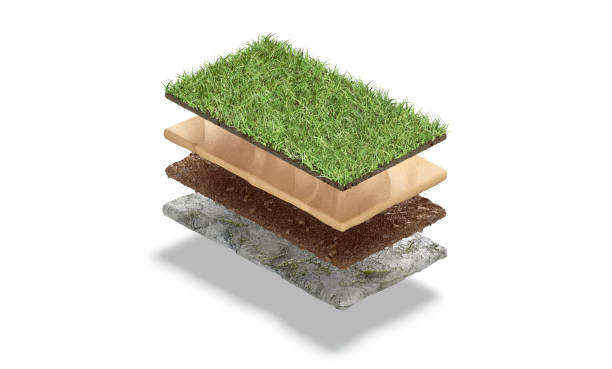Understanding the Heat Factor
How Hot Can Artificial Grass Get?
I remember the first time I stepped onto my artificial grass on a sunny summer afternoon. The temperature was soaring, and I was curious about just how hot my new lawn could get. To my surprise, it felt much hotter than I expected. Artificial grass can indeed heat up significantly, sometimes reaching temperatures up to 150°F (65°C) on a particularly sunny day. This is mainly because the plastic fibers and the infill materials absorb and retain heat.
I’ve read numerous reports and studies about this, and it’s quite a common observation. If you’re considering installing artificial grass, it’s crucial to understand that while it stays lush and green, it can also become very hot under direct sunlight. However, not all hope is lost, as there are ways to manage this heat.
The Heat-Resistant Properties of Artificial Grass
After my initial experience with the hot artificial grass, I did some digging to find out if there were any products or solutions that could help mitigate this heat issue. Thankfully, I discovered that many manufacturers are aware of this problem and have started producing heat-resistant artificial grass.
These heat-resistant varieties are designed with materials that reflect sunlight rather than absorb it, reducing the overall temperature of the surface. Some even come with cooling technology embedded in the fibers. For instance, I found a brand that uses an infill that retains moisture, which helps keep the surface cooler. Installing this type of artificial grass can make a significant difference, especially if you live in a hot climate.
Concerns for Pets and Children
Is Artificial Grass Too Hot for Pets?
One of my primary concerns before switching to artificial grass was the safety and comfort of my pets. I have a lively dog who loves to run around the yard, and I worried about the grass getting too hot for her paws. After some testing on various days and times, I noticed that during the peak hours of sunshine, the artificial grass could indeed get too hot for her to walk on comfortably.
I learned a trick that works wonders—simply hosing down the grass with water can cool it down significantly. It’s a quick and effective solution. Additionally, if you’re installing new artificial grass, consider placing it in areas with some natural shade, or invest in shading options like pergolas or large umbrellas to protect your pets from the intense heat.
Does Artificial Grass Get Too Hot for Dogs?
Dogs are particularly sensitive to hot surfaces, and just like us, they can suffer from burns if the ground is too hot. I’ve made it a habit to always check the temperature of the grass with my hand before letting my dog out to play. If it’s too hot for my hand, it’s definitely too hot for her paws.
Moreover, there are specific types of artificial grass designed with pets in mind, featuring cooling properties and soft textures to ensure they stay comfortable even during the hotter months. Regular maintenance and providing plenty of water and shaded areas can help keep your furry friends safe and happy.
Switching to artificial grass has been a learning experience, but with the right precautions and knowledge, it can be a fantastic addition to your home, offering a lush, green space for everyone to enjoy without the hassle of traditional lawn care.
Choosing the Right Materials
Select the Infill Material Wisely
When I first installed artificial grass, I didn’t realize how crucial the infill material was. The infill is the layer that sits between the grass blades, providing stability and cushioning. It turns out that the type of infill you choose can significantly affect how hot your artificial grass gets. For my yard, I opted for a light-colored silica sand infill. This material is great because it reflects sunlight rather than absorbing it, helping to keep the grass cooler. Additionally, some infills are designed to retain moisture, which also helps in keeping the surface temperature down. It’s worth spending a little extra on a quality infill to ensure your grass stays cool and comfortable.
Choose High-Quality Synthetic Grass
Not all artificial grasses are created equal. During my research, I discovered that high-quality synthetic grass often includes heat-resistant technology. These products are designed to reflect more sunlight and absorb less heat. When choosing artificial grass, look for those with UV protection and cooling technology. I went with a premium option that had these features, and it made a noticeable difference. The grass stayed cooler, and it also looked more natural and felt softer underfoot. Investing in high-quality synthetic grass is definitely a smart move if you want to keep your lawn cool.
Practical Tips to Keep Artificial Grass Cool
Incorporate Shade
Creating shaded areas over your artificial grass can dramatically reduce the surface temperature. I installed a few large umbrellas and even considered a pergola for a more permanent solution. If you have trees or other structures that provide natural shade, your grass will stay much cooler. Not only does shade help with the temperature, but it also adds a pleasant spot to relax during hot days.
Prevent Reflective Surfaces
One mistake I made was not considering how nearby reflective surfaces could affect the grass temperature. Things like windows, mirrors, or even some types of metal can reflect and amplify sunlight onto your artificial grass, making it much hotter. After noticing this, I placed some outdoor rugs and rearranged a few items to minimize reflections. It’s a small change that made a big difference.
Use a Light-Coloured Infill Material
As I mentioned earlier, the color of your infill material matters. Dark-colored infills can absorb a lot of heat, so I chose a light-colored silica sand infill for my yard. This choice helped keep the grass noticeably cooler, especially during peak sunlight hours. It’s a simple yet effective way to manage the heat.
Cool Off with Water
One of the easiest and most effective ways to cool down your artificial grass is by spraying it with water. On especially hot days, I make it a point to hose down the grass in the morning and evening. It only takes a few minutes, and the temperature drop is immediate. If you’re planning to spend time outside, this quick step can make your lawn much more enjoyable.
Incorporating these tips has made my artificial grass a joy to have, even during the hottest months. With the right materials and a few practical steps, you can keep your artificial grass cool and comfortable all year round.
Maintenance & Care Tips
Maintenance & Care Tips for Artificial Grass During Hot Summers
Maintaining artificial grass during the scorching summer months can seem daunting, but with a few simple steps, it’s entirely manageable. My first summer with artificial grass was a bit of a learning curve, but now I’ve got it down to a science. Regularly hosing down the grass not only helps to cool it but also keeps it clean. Dust and debris can accumulate, and a good rinse ensures your lawn looks fresh and inviting.
Another tip I’ve found useful is brushing the grass regularly. This helps keep the fibers upright and prevents matting, which can be more prone to heat absorption. I use a stiff-bristled broom for this, and it makes a noticeable difference. For any stubborn spots or areas that seem to get extra hot, applying a bit of water more frequently can help keep the temperature down.
Finally, ensure that any heavy furniture or equipment is moved around periodically. This prevents the grass from getting compressed in specific areas, which can lead to heat buildup. By following these maintenance tips, you can keep your artificial grass looking and feeling cool all summer long.
Summary and Final Thoughts
What You Need to Know About Artificial Grass and Heat
Switching to artificial grass has been a game-changer for me, but understanding how it interacts with heat is crucial. Artificial grass can get quite hot under direct sunlight, but choosing the right materials and following some practical tips can significantly mitigate this issue. Opt for heat-resistant synthetic grass and light-colored infill materials, and create shaded areas to keep the temperature down.
Regular maintenance, like hosing down the grass and brushing it, is essential to ensure it stays cool and in good condition. Reflective surfaces can increase the heat, so it’s wise to minimize them around your lawn.
Incorporating these strategies has made my experience with artificial grass overwhelmingly positive. With the right approach, you can enjoy a lush, green lawn that remains comfortable even in the hottest weather. Whether you’re worried about pets, kids, or just your own comfort, these tips will help you keep your artificial grass cool and enjoyable all summer long.


